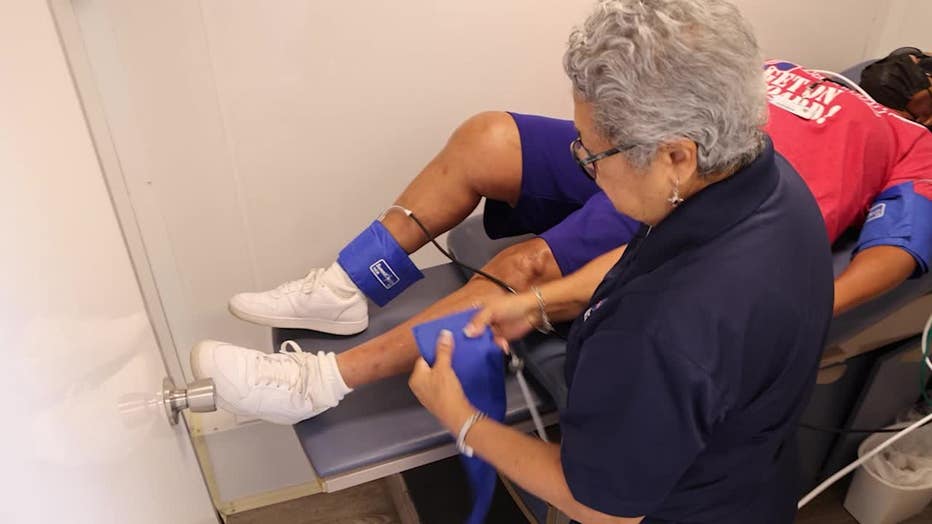Leg pain, aches and weakness can be signs of blood vessel blockages, but seniors may miss the symptoms
Raising awareness for Peripheral Artery Disease
Conditions like diabetes or heart disease can lead to a tricky condition called Peripheral Artery Disease (PAD) that often leads to amputation surgery. FOX 5 Medical Team's Beth Galvin spoke to a family whose matriarch suffered from it and is now taking the steps to teach others how to prevent it from happening.
DEKALB COUNTY, Ga. - Outside the Lou Walker Senior Center in South DeKalb County, a group of seniors is getting a quick blood pressure check. The cuffs aren't just wrapped around their arms. They're also hugging both ankles.
This is a screening tool to detect blockages that could be caused by peripheral artery disease, or PAD, offered by the Save Legs, Change Lives campaign.
Kimberly Campbell, 47, likes what she is seeing.
"This could change lives, and I definitely feel like it would have changed hers," Campbell says.
Campbell is talking about her mother, Gertrude Sims Campbell, who passed away at the age of 78 in 2020 back home in Mississippi.
"Where I'm from, they didn't have that kind of screening," she says. "So, she wasn't offered screening, in spite of her having a lot of risk-based factors and being diabetic. No screenings were done."
But Dr. Edward Wingfield, an interventional cardiologist with Robert Wood Johnson University Hospital in New Jersey says many of us don't know much about PAD.
"Even some of our physician colleagues, we don't screen for peripheral artery disease as aggressively as we should," Dr. Wingfield says.
There are warning signs including numbness, painful cramping, or weakness in the legs, foot or leg wounds, slow toenail growth and shiny skin or hair loss on legs.

Dr. Wingfield says people can overlook the symptoms, and PAD is often just the tip of the iceberg.
"Typically, patients who have PAD also have diabetes, high cholesterol," he says. "They are smokers, they have heart disease."
Campbell says her mother was diagnosed with diabetes in her late forties, or early fifties.
Being a Black American, Gertrude Sims Campbell was also twice as likely to develop PAD, and four-times more likely to require leg amputation, than a white woman her age.
That's exactly what happened, her daughter says.
Campbell developed foot sores that, over time, became severe wounds.
"She had worn a shoe that had rubbed against her foot, and she had some wounds on her shins," Campbell says. "For years, she went back and forth to the wound care center."
They tried surgery to restore the blood flow.
It didn't help.
"When they unwrapped her leg, it was raw and blisters came on it," Campbell remembers. "Basically, there was nothing they could do but amputate."
After losing part of both legs, Gertrude Campbell spent many of her final years in a wheelchair.
That is why her daughter is here for this screening, part of the "Save Legs, Change Lives" campaign sponsored by Janssen Pharmaceuticals.
The goal is to detect and treat PAD earlier, especially in African Americans, long before amputation is the only option left.
"Please notify your doctor and maybe ask for some screening," Campbell says. "My whole purpose is to empower other people."

